This Lemon Meringue Pie recipe boasts a cool and creamy sweet-tart lemon filling and a fluffy toasted meringue topping – it’s the showstopping refreshing dessert of spring and summer!
This Lemon Meringue Pie recipe is a taste of bright, zingy, silky smooth sunshine and will have everyone begging for the recipe! It begins by blind baking the buttery, flaky homemade pie crust (no soggy crust here!) or you are welcome to use store-bought. Next, add the creamy, silky-smooth lemon filling that’s not too tart, not too sweet, but the adept balance of fresh, tangy sweetness that makes you want to lick the plate. Finally, top with light, fluffy toasted meringue that’s foolproof with my tips and tricks. Let the pie chill (the perfect make ahead dessert!), then bite into the fresh, vibrant, tangy, sweet relief of cool, creamy Lemon Meringue Pie.
If you love lemon desserts, don’t miss Lemon Curd, Lemon Blueberry Cake, Layered Lemon Cake, Lemon Pound Cake, Lemon Cheesecake or Lemon Cheesecake Bars.
I’ve included detailed instructions, helpful tips and a “How to Make Video” so this Lemon Meringue Pie recipe is a foolproof success – even if you’ve never made it before! OR use the “JUMP TO RECIPE” button at the top of the post to skip directly to the printable recipe card.
How to Make Lemon Meringue Pie Video
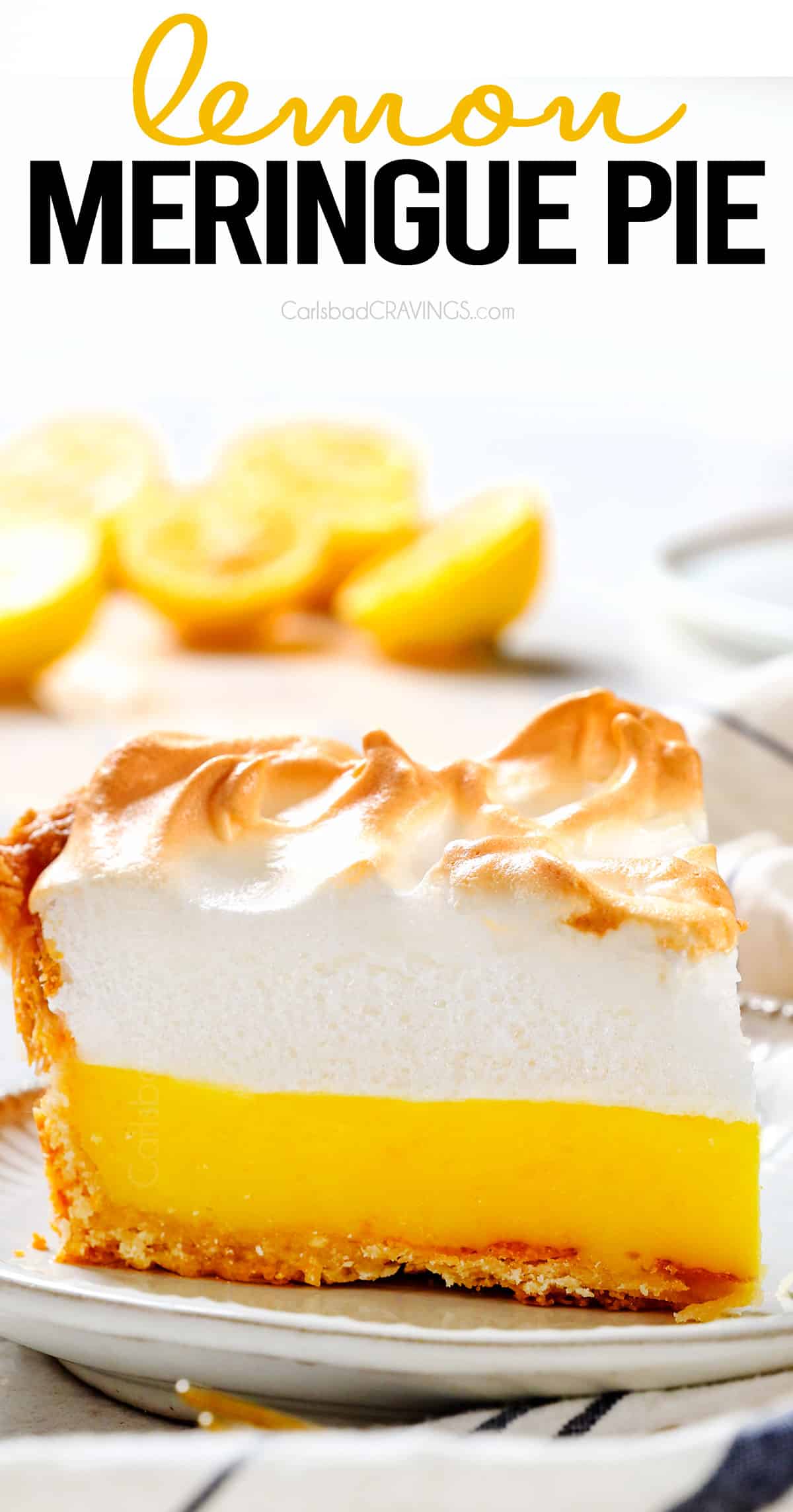

WHY this recipe works
The crust isn’t soggy. The homemade pie crust is irresistibly buttery, thick and flaky. It’s blind baked (partially baked without the filling) so it’s the ideal golden crisp texture when it finishes baking with the filling.
The lemon filling is perfectly balanced. It’s bright, tart, and sweet all packaged in a silky-smooth, cool, creaminess. My husband even said, “I usually don’t like Lemon Meringue Pie because it’s too sweet, but this is perfect!”
The lemon pie filling is gorgeously thick and creamy. It’s thickened by egg yolks and cornstarch with an assist from luxurious butter. The secret is cooking the filling until bubbles burst on the surface, neutralizing the egg yolks enzyme that thins out cornstarch. Next, the pie is chilled to achieve that heavenly cool, creamy, refreshing slice.
The recipe utilizes a French-style meringue. This is the most straightforward way to achieve a beautiful, airy, and fluffy meringue. I’ve included tips and tricks so it doesn’t weep or deflate. It may sound daunting, but only takes minutes to whip up (literally) and is 100% foolproof if you follow the recipe.
Now, get ready to wow your friends and family with the Best Lemon Meringue Pie you’ve ever sunk your teeth into!

Lemon Meringue Pie Ingredients
Lemon Meringue Pie is made up of three parts, 1) the crust, 2) the lemon filling, and 3) the meringue. A full list of measurements has been provided in the recipe card at the end of this post, but let’s review the ingredients and answer any questions you might have:
For the crust:
- Homemade pie crust.: I highly recommend my favorite homemade pie crust that I use it in all of my pie recipes. It’s truly a no fail recipe made with both butter and shortening to create the best flavor and texture: it’s gloriously buttery and flaky, holds together when slicing and transferring, yet soft enough so it cuts with barely any effort. The ingredients list is minimal – just flour, sugar, salt, shortening, butter, and ice water. The crust can be made ahead of time and stashed in the refrigerator or freezer. The only caveat is you’ll need to plan ahead. The dough needs to chill for at least 2 hours before rolling and then 45 minutes before baking, so I like to make it a day ahead of the pie.
- Store-bought pie crust: Follow the instructions on the packaging in regards to thawing. Brush with an egg wash (1 egg whisked with 1 tablespoon heavy cream or milk) and partially bake before adding the lemon filling.

Can I make this recipe gluten free?
Yes! Just use your favorite gluten free pie crust and you’re all set!
For the Lemon Pie filling:

For the meringue:

what’s the best pan for pie?
A quiche pan with a removable bottom is the secret to cleanly sliced pie without crumbled crust! It’s a total game changer – I use this 9-inch quiche pan in all of my pie recipes. Of course, this recipe also works with a pie dish.
To use a quiche pan, add the crust per usual, pressing it all the way up the sides of the pan because it will shrink somewhat when baked. When ready to serve, place the pie on an inverted bowl. The sides of the pan will drop down, leaving you with just the pie, allowing you to:
1. Easily transfer the entire pie to a plate or cake stand for beautiful presentation.
2. Slice the pie cleanly without ruining two slices before you can finally get a whole piece out.
3. Remove the slices from the pan without losing any crust.
How to Make Lemon Meringue Pie
Making the best Lemon Meringue Pie is easier than you think! The pie crust is blind baked before being filling with bright lemon filling and topped with billowy meringue. See below for how to make the recipe with step-by-step photos. Detailed instructions with measurements are found in the recipe card at the bottom of the post:
Step 1: Make the Crust


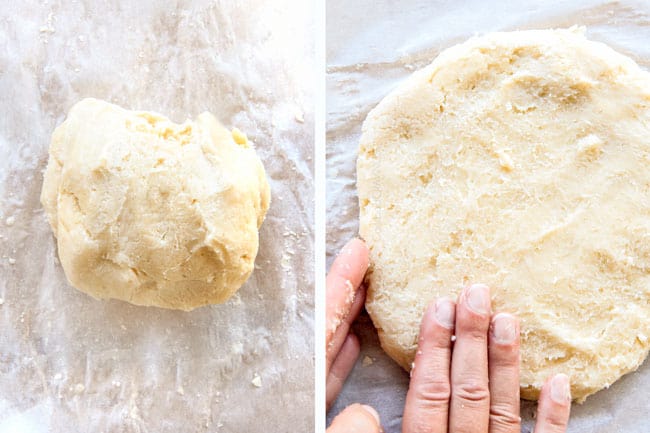

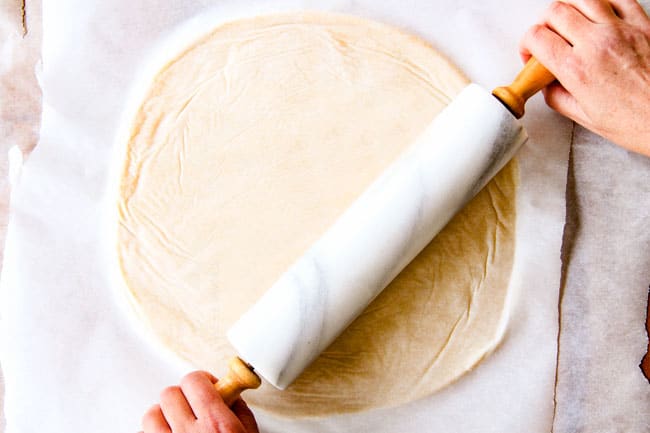
STEP 2: how to BLIND BAKE THE PIE CRUST


Step 3: Make the Lemon Filling
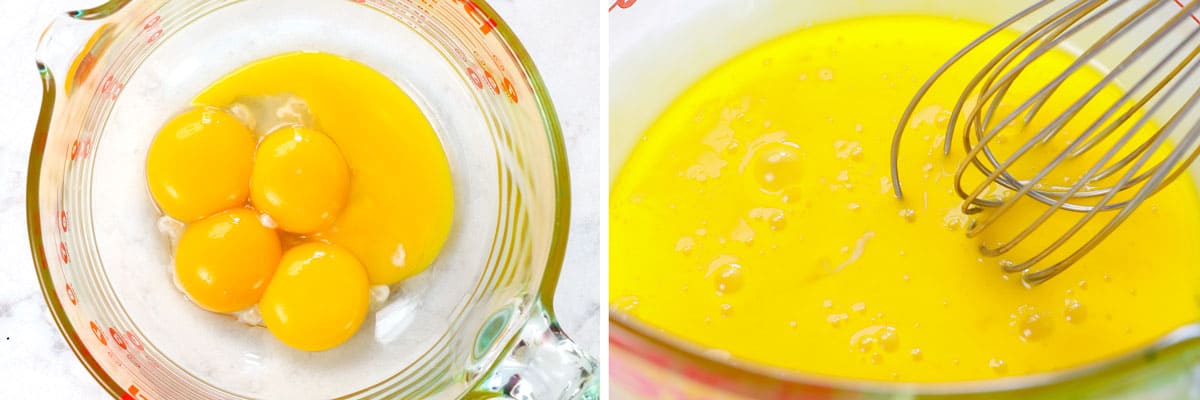

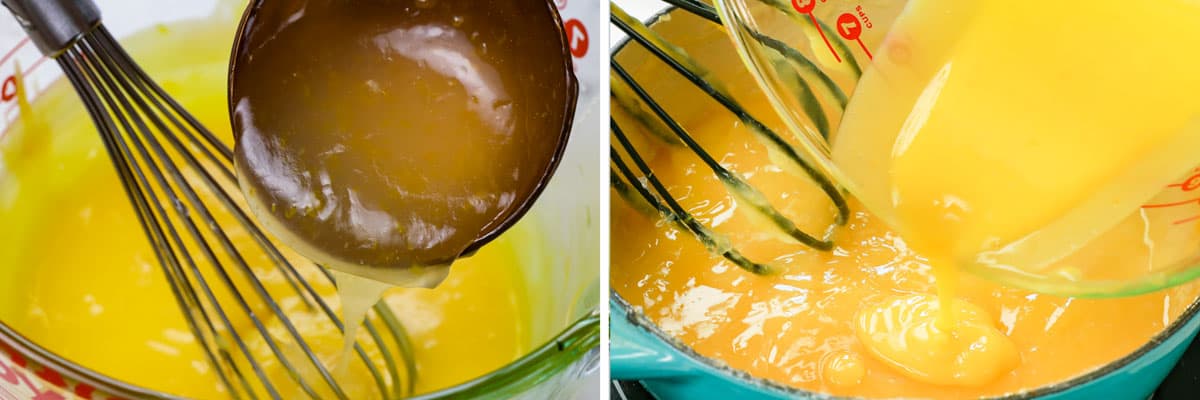

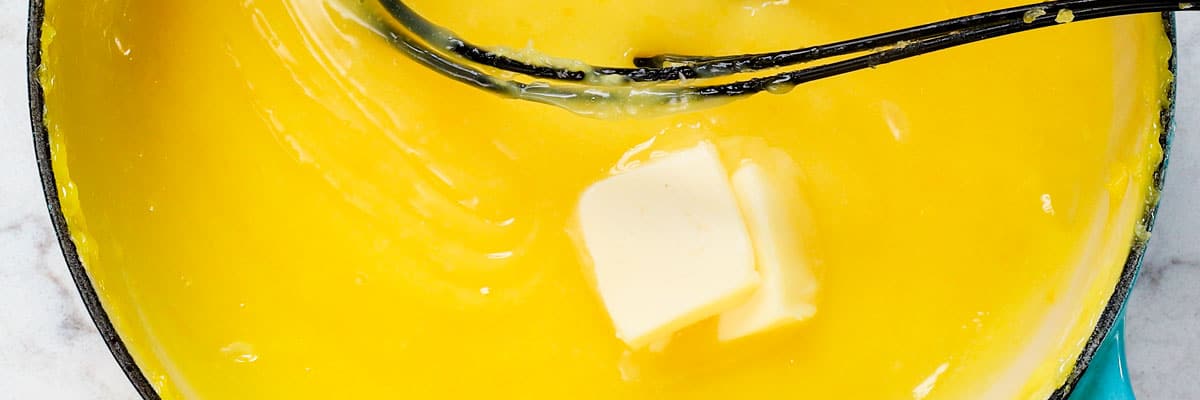
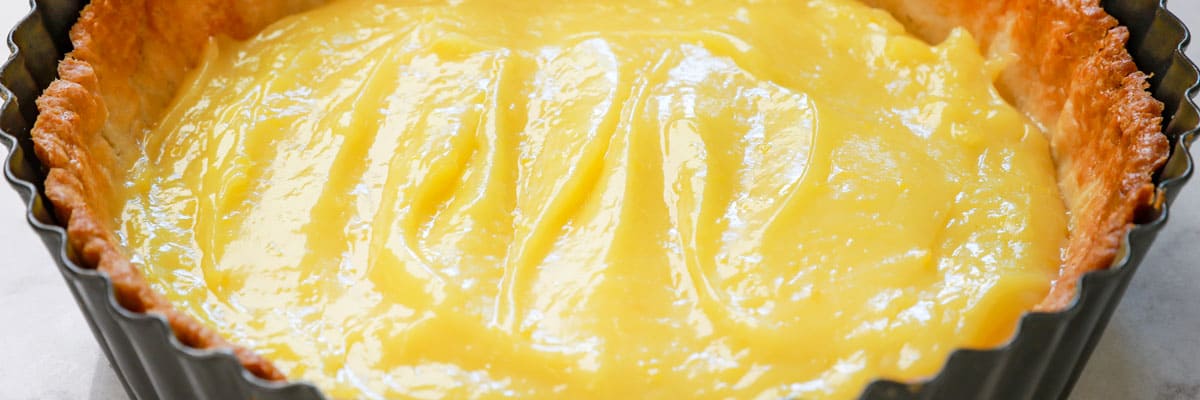
Step 4: Make the Meringue
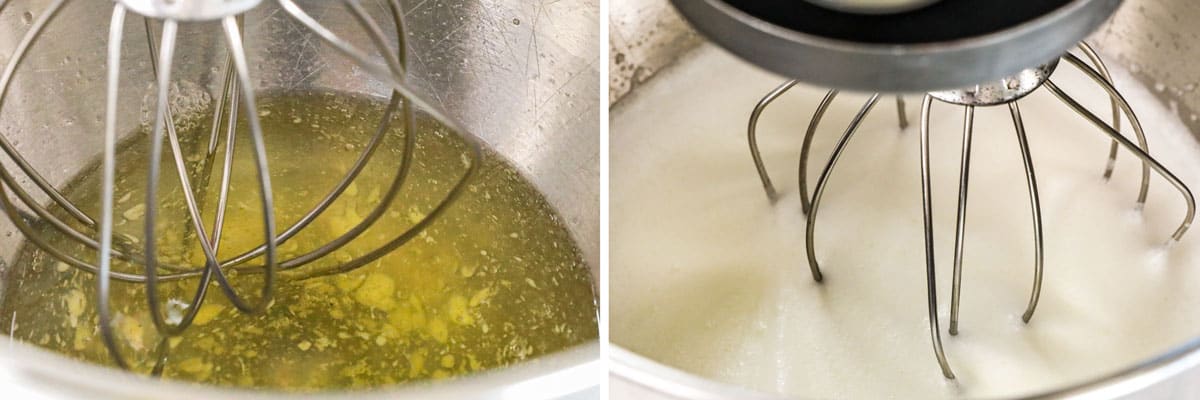

Step 5: Bake the Pie
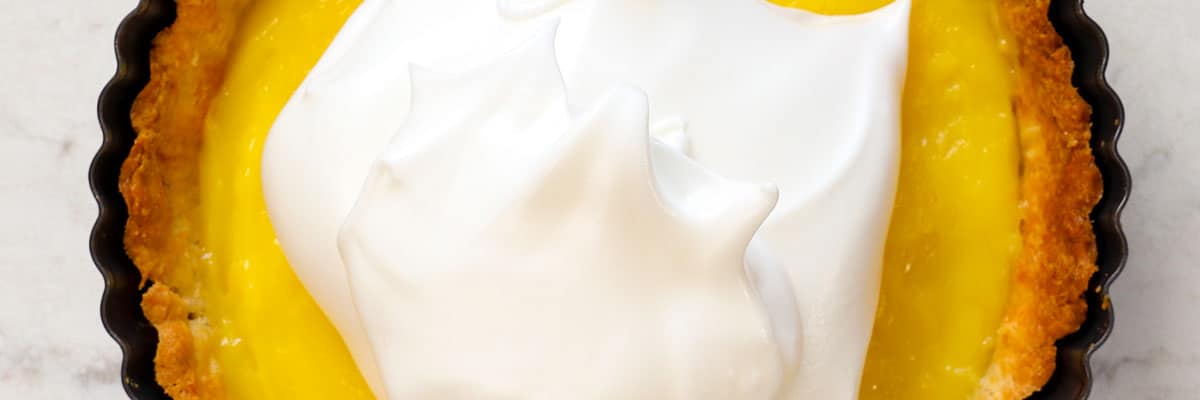
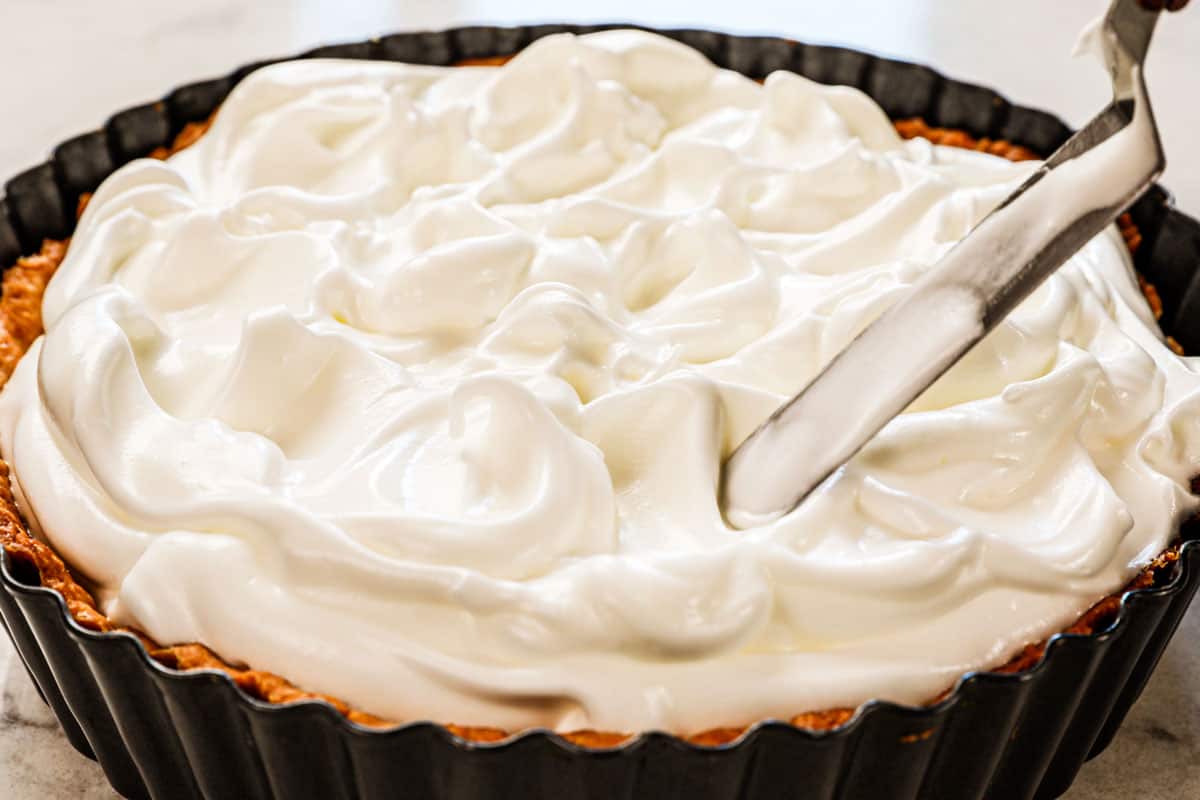
Step 6: Chill the Pie


What is the best way to cut lemon meringue pie?
The best way to cut Lemon Meringue Pie is the same method used for cutting cheesecake: Dip a sharp knife into hot water (this can be a hot glass of water, or run it under piping hot water for several seconds). Wipe the knife dry, then gently start slicing through the top rubbery layer, sawing as needed. Once through the top layer, you can press down with the knife. Repeat dipping the knife in hot water and drying between every slice.

TIPS for making the Pie crust

Prep ahead and Don’t multitask!
The lemon filling, meringue, and adding the meringue to the lemon filling are all time sensitive. To be successful, prep (i.e. separate the eggs, grate the lemon zest, juice the lemons, etc.) and measure all of your ingredients out for both the lemon filling and the meringue before you begin the recipe so you can grab them the second you need them.

TIPS for the lemon filling

How do I prevent a runny lemon pie filling?
Cornstarch is key, but not enough. The trick to preventing a runny filling is to cook it long enough, with enough heat, until bubbles start to pop on the surface of the lemon/egg yolk mixture. You don’t need to worry about the mixture curdling because the eggs have been tempered and the cornstarch prevents them them from curdling.
Why does this work? Egg yolks contain an enzyme that naturally thins out cornstarch. Heat is required to deactivate this enzyme. Once it’s neutralized, the thickening power of cornstarch is left to work its magic.
You’ll want to cook the filling until the consistency of thick pudding. It will set in the refrigerator, but won’t thicken much more. So, if it goes into the fridge runny, you’ll be slicing into a runny pie.
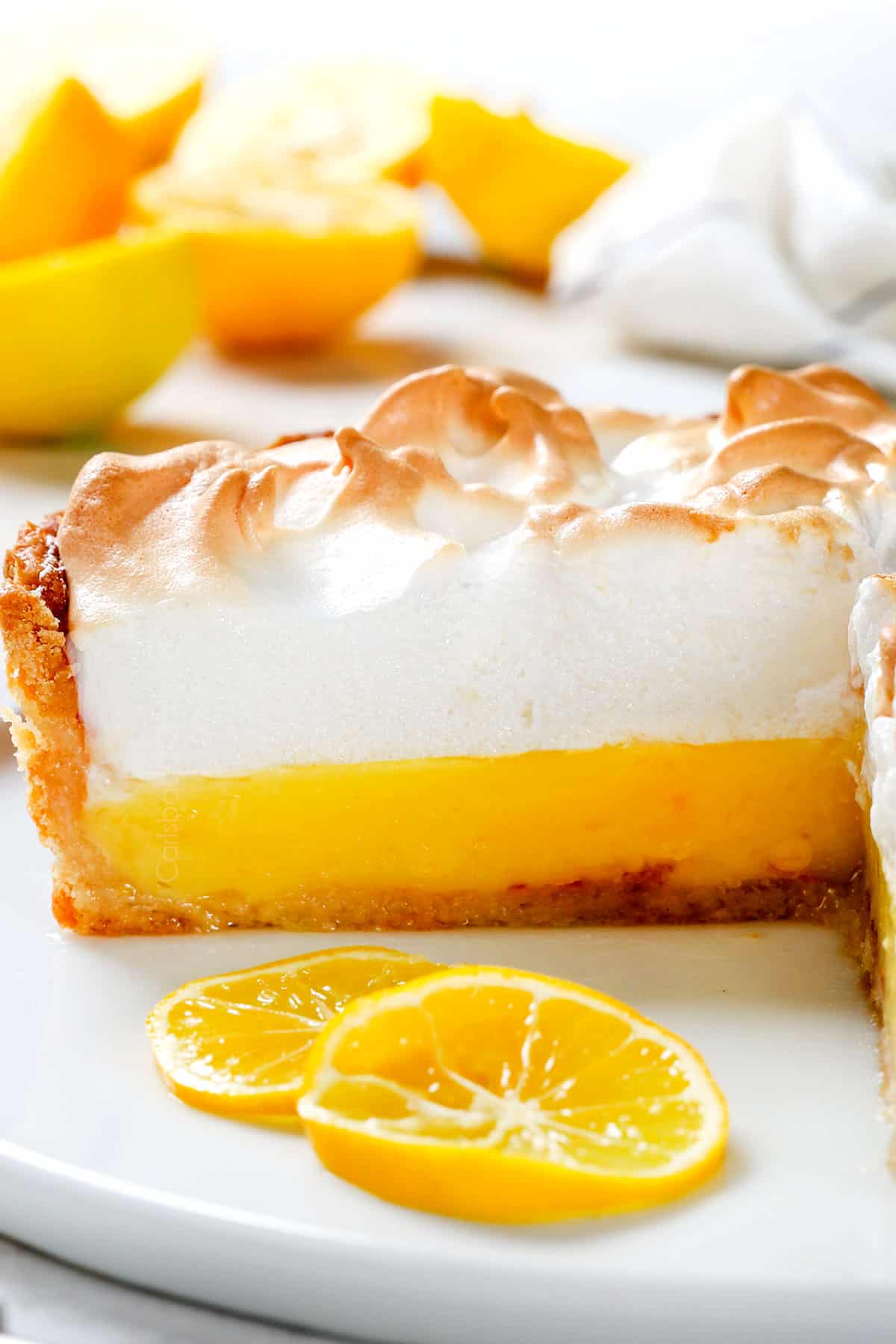

How do I prevent Lemon Meringue Pie from weeping?
1. Add the meringue to warm filling. Start making the meringue as soon as you’re done with the lemon filling so it can be added to the filling while the filling is still warm. The warmth of the filling seals the two layers together, preventing separation and weeping, and also starts cooking the meringue as the steam passes upwards.
2. Spread the meringue to the edges. Spread the meringue all the way to the edges of the crust while the filling is still warm. Don’t leave any gaps. The attachment will help anchor the meringue, preventing it from pulling away from the edges, shrinking and weeping, and separating form the lemon filling.
3. Don’t make meringues on humid days. The humidity causes the sugar to absorb the extra moisture in the air, making the meringue sticky, chewy and less voluminous. It also can cause tiny beads of syrupy liquid to form on the meringue.
4. Let the pie cool completely before slicing. This allows the filling to completely set. Also, serve the pie on the day you make it, as storing it overnight in the fridge (which is very humid) can cause it to weep.
5. The meringue is undercooked or overcooked. To avoid undercooking, add your meringue while the pie filling is warm. This allows the steam from the filling to rise and move through the meringue.

How do I create stiff peaks in my meringue?
1. Use room temperature eggs. Separate the eggs early while cold, then let them warm to room temperature before beating. Room-temperature egg whites have decreased surface tension, allowing them to foam more easily and whip more easily to a higher volume. Cold egg whites tend to reduce meringue volume and are easier to overbeat.
2. Use a spotless bowl and egg whites! Fat and water are the greatest enemy of making meringue. If there’s any residual oil or water in the mixing bowl, or a little egg yolk, your meringue will be ruined. The fat competes with the egg protein to form around the network of air bubbles. The winning fat doesn’t create a stable structure, and the meringue will not whip to stiff peaks.
3. Add the sugar slowly. The sugar helps coat the air bubbles, making the foam stronger and stiffer, forming the meringue. However, the foam needs time to absorb the sugar. Add the sugar slowly, so it has time to dissolve before adding additional sugar.

How do I prevent meringue from deflating or collapsing?
1. Don’t skip the cream of tartar: This helps stabilize the meringue and keeps it firm, even after baking.
2. Use fresh egg whites. Old egg whites tend to collapse and don’t rise well in the oven because they don’t hold the air bubbles as well.
3. Separate the eggs when cold. Cold eggs hold their shape better and separate more easily – we don’t want a drop of egg yolk in the whites or it will be unstable.
4. Beat the egg whites slowly, then gradually increase the speed. Beat the egg whites slowly to form small and stable bubbles to strengthen and stabilize the foam. If the egg whites are beaten too quickly at the beginning, large, unstable bubbles are created, which will later collapse.
5. Add the sugar after the egg whites are foamy. If you add the sugar before this point, the egg whites can stretch too much and won’t reach a stiff peak.
6. Whip until glossy, but don’t overbeat. Your egg whites should be stiff and glossy. If they’re not yet at that stage, keep whipping, but watch closely and don’t walk away for a second. They will turn from soft peaks to stiff peaks quickly.

Can You Overbeat Meringue?
Yes, so watch the meringue closely! If whipped too long, the egg white and sugar bonds break and the foam loses its volume. If you overbeat, the meringue will be dry, grainy and lumpy.
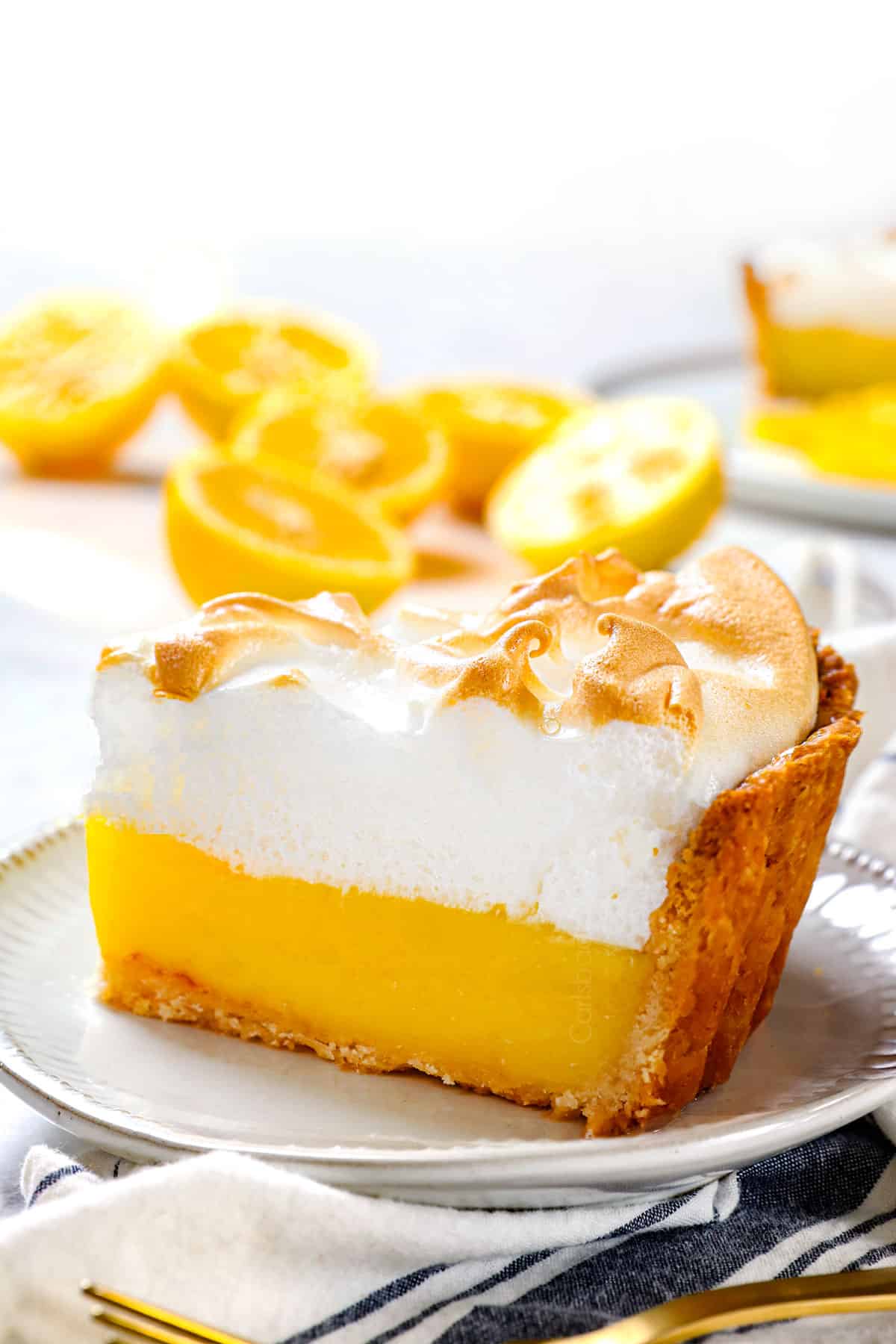
Lemon Meringue Pie FAQS
Meringue should not be eaten raw because it contains raw egg whites. For safety, a meringue must be cooked to a minimum internal temperature of 160 F.
The meringue is safe to eat when it reaches 160 degrees F, this usually takes 15 minutes at 350 degrees. Continue to bake an additional 5-10 minutes for a total of 20-25 minutes to achieve a toasted meringue top. If the top appears to be browning too quickly, lightly tent with foil to protect the meringue. If just a few tips are browning too quickly, tent just the tips with foil.
Brown the tips of the meringue in the oven in order to bake the egg whites to a safe temperature of 160 degrees F. A blow torch should only be used after the pie is baked for more dramatic brown tips.
It’s important to blind bake the crust (partially bake the crust without the filling) before adding the lemon filling and meringue, otherwise you’ll have a soggy crust. The crust requires longer to bake in the oven than the filling, so giving it a head start ensures the crust stays buttery and flaky even on the bottom – no soggy crust here!
The watery layer between the meringue and the filling (weeping) is usually caused by not adding the meringue to a warm filling, causing it to be undercooked. When you add it to a warm filling, the warmth of the filling immediately starts cooking the meringue as the steam rises through the meringue. It also helps seal the two layers together to help prevent weeping.
Yes, lemon meringue pie should be refrigerated after a couple hours to prevent foodborne illness. However, refrigeration can cause the pie to weep due to the humidity of the refrigerator, so it’s best not to refrigerate more than a few hours before serving.
Lemon Meringue Pie does not need to be covered while it chills in the refrigerator before serving. If storing overnight, however, cover with a cake caddy or insert toothpicks halfway between the center and edge of the pie, then loosely cover with plastic wrap.
Start beating the egg whites for meringue on low speed to form small, stable air bubbles, then increase to medium speed for one minute, then finish on high speed. Gradually increasing the whipping speed creates a more stable meringue which is less likely to collapse due to large, unstable air bubbles.
Always spread the meringue over a hot, or warm pie filling. If the filling is cold, the meringue will bake on the top, but not on the bottom, trapping in moisture and making the pie weep.
The key to thickening Lemon Meringue Pie so it sets properly is to cook the filling until bubbles start to pop on the surface of the lemon/egg yolk mixture. It should be the consistency of thick pudding before you remove it from the heat. If it’s not thick before you add it to the pie, it will never set properly. Also, take care that the pie is completely cool before slicing into, otherwise, your filling will be runny.
If your pie filling is runny, continue to cook until it thickens to the consistency of thick pudding. Be patient and cook on! You may need to increase the heat if this is taking longer than the prescribed time in the recipe.
Whenever cooking with highly acidic ingredients (like lemon juice), it’s important to use a nonreactive pan otherwise the acid in the food can mix with the metal and result in an unpleasant metallic taste. It also can damage the pan. Examples of nonreactive saucepans that don’t react with food include stainless steel, anodized aluminum, and enameled. Avoid aluminum, unlined copper and non-enameled iron.
Take care to use fresh egg whites because old egg whites don’t hold the air bubbles as well. The most critical key to success, however, is to beat the egg whites slowly to form small and stable bubbles before increasing the speed to high. If the egg whites are beaten too quickly at the beginning, you end up with large, unstable air bubbles which later collapse, causing the meringue to deflate.
Lemon Meringue Pie can be kept at room temperature for two hours, then needs to be refrigerated beyond that to prevent foodborne illnesses.
Yes, but there is a loss in optimal texture. The egg whites in the meringue can become rubbery and chewy when frozen and thawed. For the best texture, freeze the pie immediately after it’s finished chilling for 4 hours in the fridge. You want the meringue to be as “fresh” as possible when it goes into the freezer.
Only beat the meringue on high speed after the egg whites have been whipped on low speed for 1 minute, followed by medium speed for 1 minute. This creates stable air bubbles that are strong enough to hold the sugar. If the egg whites are beaten too quickly on high speed, big unstable air bubbles form, which will later collapse and cause the meringue to deflate.

possible recipe variations

Can This recipe be made ahead?
Lemon Meringue Pie is best enjoyed the day it is made because prolonged refrigerating introduces humidity which cases the pie to weep and the meringue to deflate. However, you can certainly make the pie crust in advance, or up to any of the following points:
-Make pie dough: Make the pie dough, shape it into a disc, cover it with plastic wrap, and refrigerate for up to 2 days before using.
-Form pie shell: Transfer dough to the pie plate to make the pie shell, cover, and refrigerate for up to 2 days. It can also be covered in multiple layers of plastic wrap and frozen for 3 months.
-Bake pie shell: Blind bake and cool the pie shell. Cover with plastic wrap and refrigerate for up to 5 days or freeze for up to 3 months.

HOW long is lemon Meringue Pie good for?
Lemon Meringue Pie is its best showstopping self a few hours after it is made, but leftovers are still delicious and will keep in the fridge for up to 4 days. Just note that the meringue will wilt and start weeping (releasing moisture) as more time passes (still tasty though!).
Lemon Meringue Pie does not need to be covered while it chills in the refrigerator before serving. If storing overnight, however, cover with a cake caddy or insert toothpicks halfway between the center and edge of the pie, then loosely cover with plastic wrap.
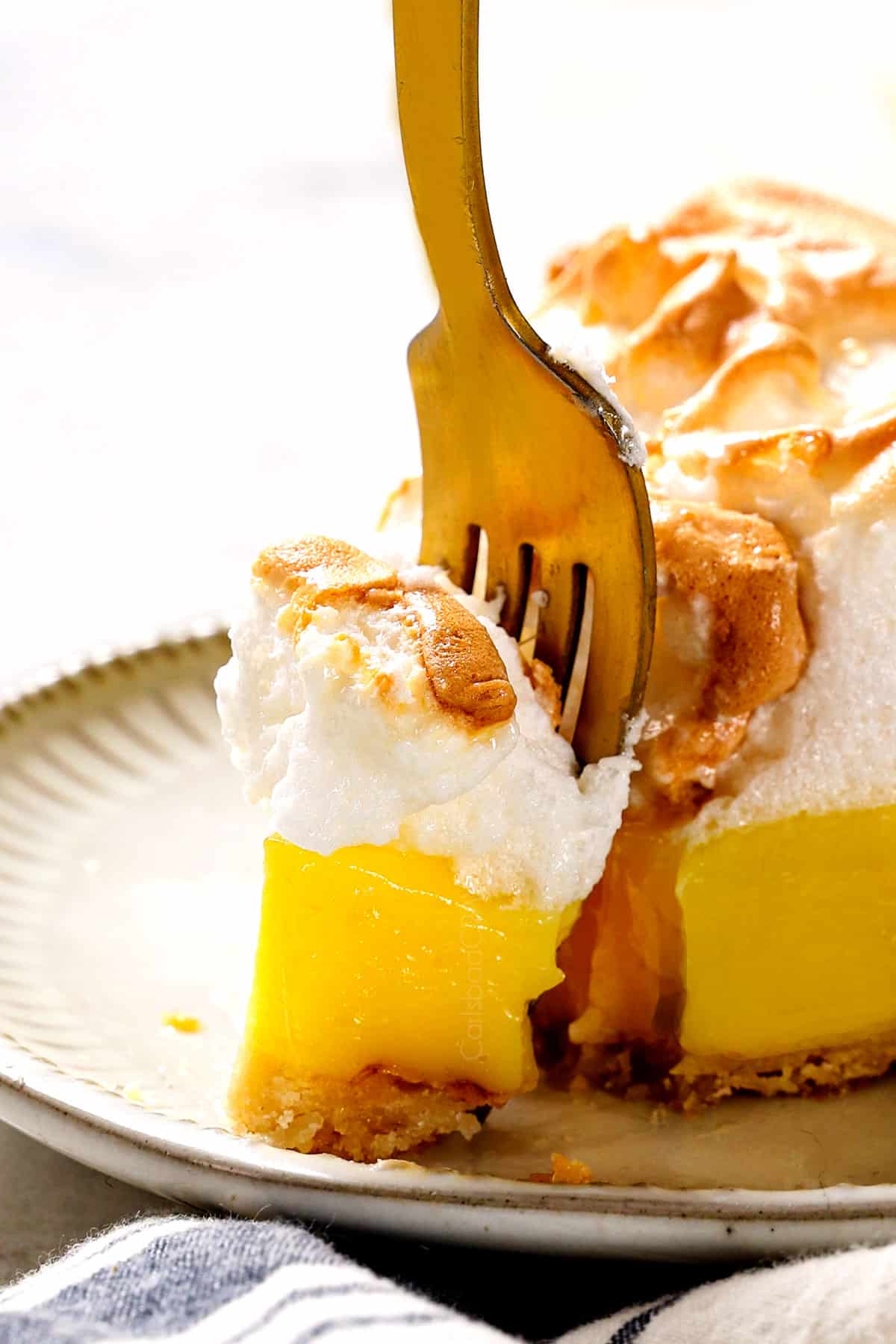
WANT TO TRY THIS Lemon Meringue Pie RECIPE?
PIN IT to your Dessert recipe BOARD TO SAVE FOR LATER!
FIND ME ON PINTEREST FOR MORE GREAT RECIPES! I AM ALWAYS PINNING :)!
©Carlsbad Cravings by CarlsbadCravings.com

Lemon Meringue Pie
Save This Recipe To Your Recipe Box
You can now create an account on our site and save your favorite recipes all in one place!
Ingredients
Pie Crust
- 1 recipe Homemade Pie Crust <<click for recipe
Lemon Filling
- 5 large egg yolks at room temperature (use the whites in the meringue below)
- 1 cup granulated sugar
- 1/3 cup cornstarch
- 1/4 teaspoon salt
- 1 Tablespoon lemon zest
- 1/2 cup fresh lemon juice (preferably Meyer)
- 1 1/3 cups water
- 2 Tablespoons unsalted butter softened to room temperature
- 1/2 teaspoon vanilla extract
Meringue
- 5 large egg whites at room temperature
- 1/2 teaspoon cream of tartar
- 1/2 cup granulated sugar
- 1/8 teaspoon salt
Instructions
PIE CRUST
- Note: The crust can be baked, cooled, covered and refrigerated up to 5 days ahead of time. At the least, I like to make the pie dough the night before because it needs to chill in the refrigerator for at least 2 hours before rolling out and blind baking.
- Make the pastry dough: Prepare pie dough according to recipe directions and bake following the BLIND BAKE instructions in the recipe (click HERE for pie crust recipe). The pie shell does not need to be cooled before adding the pie filling.
- A note on pans: I use a quiche pan with a removable bottom, but a pie pan works great. If using the quiche pan, press the dough all the way up the sides because it will shrink a bit as it bakes.
Lemon Filling
- Preheat oven: Preheat oven to 350 degrees F.
- Prep ingredients: The lemon filling, meringue, and adding the meringue over the lemon filling are all time sensitive. To be successful, prep (i.e. separate the eggs, grate the lemon zest, juice the lemons, etc.) and measure all of your ingredients out for both the lemon filling and the meringue before you begin the recipe so you can grab them the second you need them.
- Whisk egg yolks: Whisk the egg yolks together in a liquid measuring cup or bowl; set aside.
- Thicken the lemon filling: Whisk the sugar, cornstarch, salt, lemon zest, lemon juice and water together in a small nonreactive saucepan until the cornstarch dissolves. Cook over medium heat, stirring constantly, until thickened, about 5-7 minutes; turn off heat.
- Temper the egg yolks: Whisking the egg yolks constantly, slowly stream a large ladleful of the thickened lemon mixture into the beaten egg yolks; repeat 2-3 times (never stop whisking!). This will prevent the eggs from scrambling once they’re added to the warm lemon mixture. Now, while constantly whisking, slowly stream the egg yolk mixture into the lemon mixture in the pan.
- Thicken the filling: Return the heat to medium, while you continue to whisk. Cook until the mixture is thickened to the consistency of thick pudding and big bubbles begin bursting on the surface, about 175-180 degrees F an instant-read thermometer. Watch the video in the recipe card for exact consistency.
- Stir in the butter: Once thickened, remove the saucepan from the heat and stir in the vanilla and butter until melted.
- Transfer to the pie crust: Spread the filling into the partially baked pie crust (the crust can still be warm) and spread evenly. Immediately start to make the meringue.
Make the Meringue
- Beat the eggs to soft peaks: Using a stand mixer fitted with the whisk attachment (my use a handheld mixer), beat the egg whites and cream of tartar on low speed for 1 minute. Increase to medium and beat for 1 minute. Finally, increase to high speed and beat until soft peaks form, about 3-4 minutes. (Soft peaks means the peaks flop over as soon as the beaters are lifted.)
- Beat to glossy stiff peaks: Slowly and gradually add the sugar, followed by the salt and continue to beat on high speed until billowy, glossy stiff peaks form, about 2 minutes. (Stiff peaks means the egg whites stand straight up when the beaters are removed).
Bake the Pie
- Assemble the pie: Immediately spread the meringue evenly over the lemon filling. Make sure you spread it all the way to the edges so it attaches to the crust without any gaps. The attachment will help anchor the meringue and prevent it from shrinking and weeping.
- Bake: Bake the pie at 350 degrees F on the lowest oven rack for 20-25 minutes (don't overbake or it can weep). Keep a close eye on the meringue and cover tips that are browning too quickly (or the whole pie if needed).
Chill the Pie
- Cool to room temperature: Let the pie cool on a wire rack for two hours.
- Chill in the fridge: Transfer the room temperature pie to the fridge (don't cover). Chill for 3-4 hours before slicing and serving. It can be chilled longer, but the fresher, the better (less chance of weeping/deflating).
- To slice: Run a sharp knife under hot water, or dip in a glass of hot water, then dry. Slowly slice through the meringue before pressing down to slice thorugh the rest of the pie. Clean the knife and repeat.
Video
Notes
- Don’t make meringue on humid days. The humidity causes the sugar to absorb the extra moisture in the air, making the meringue sticky, chewy and less voluminous. It also can cause tiny beads of syrupy liquid to form on the meringue.
- Use fresh egg whites. Old egg whites tend to collapse and don’t rise well in the oven because they don’t hold the air bubbles as well.
- Use a spotless bowl and egg whites! Fat and water are the greatest enemy of making meringue. If there’s any residual oil or water in the mixing bowl, or a little egg yolk, your meringue will be ruined.
- Separate the eggs when cold. Cold eggs hold their shape better and separate more easily – we don’t want a drop of egg yolk in the whites! Now, let the separated eggs come to room temperature.
Make Ahead
Lemon Meringue Pie is best served the same day it is made. You can, however, prep the crust ahead of time:- Make pie dough: Make the pie dough, shape it into a disc, cover it with plastic wrap, and refrigerate for up to 2 days before using.
- Form pie shell: Transfer dough to the pie plate to make the pie shell, cover, and refrigerate for up to 2 days. It can also be covered in multiple layers of plastic wrap and frozen for 3 months.
- Bake pie shell: Blind bake and cool the pie shell. Cover with plastic wrap and refrigerate for up to 5 days or freeze for up to 3 months.
Storage
- Lemon Meringue Pie is its best showstopping self a few hours after it is made, but leftovers are still delicious and will keep in the fridge for up to 4 days. Just note that the meringue will deflate and start weeping (releasing moisture) as more time passes (still tasty though!).
- Lemon Meringue Pie does not need to be covered while it chills in the refrigerator before serving. If storing overnight, insert toothpicks halfway between the center and edge of the pie, then loosely cover with plastic wrap.

Did You Make This Recipe?
Tag @CarlsbadCravings and Use #CarlsbadCravngs
Leave a Review, I Always Love Hearing From You!
Recipe adapted from Sally’s Baking Recipes

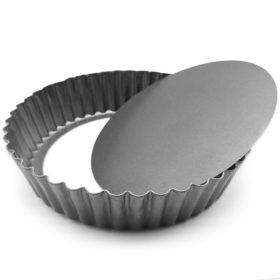
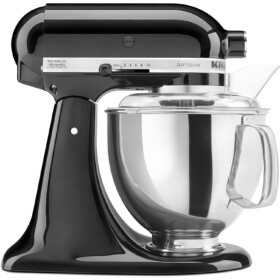

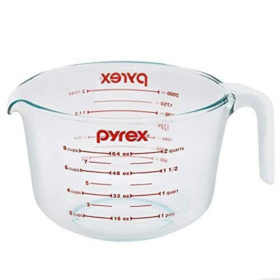
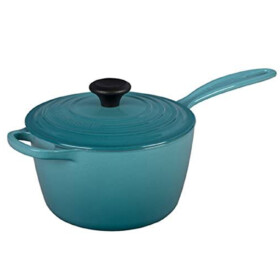
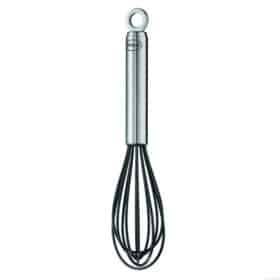



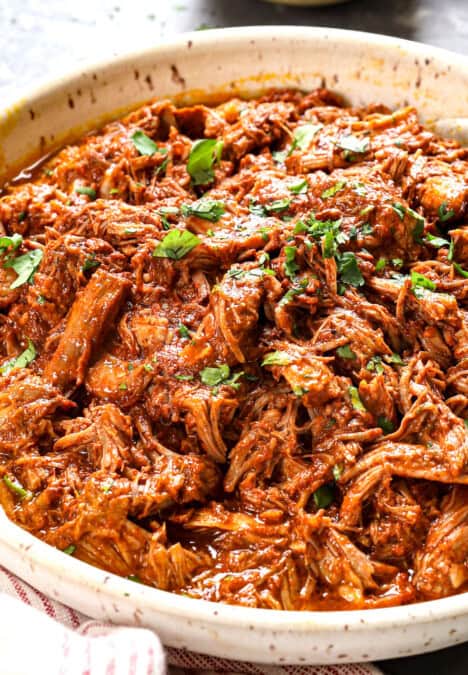
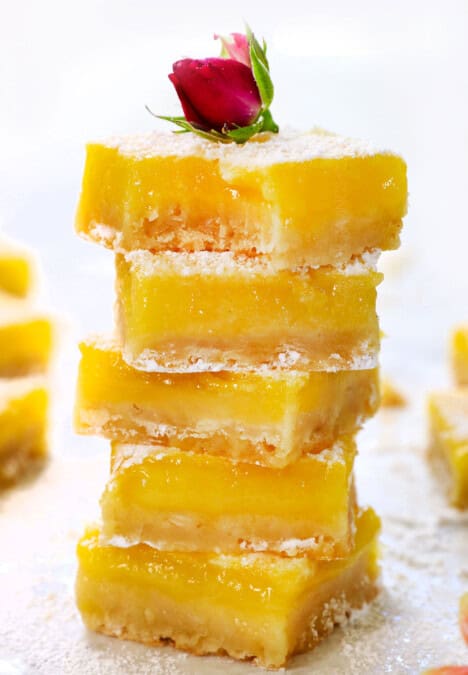
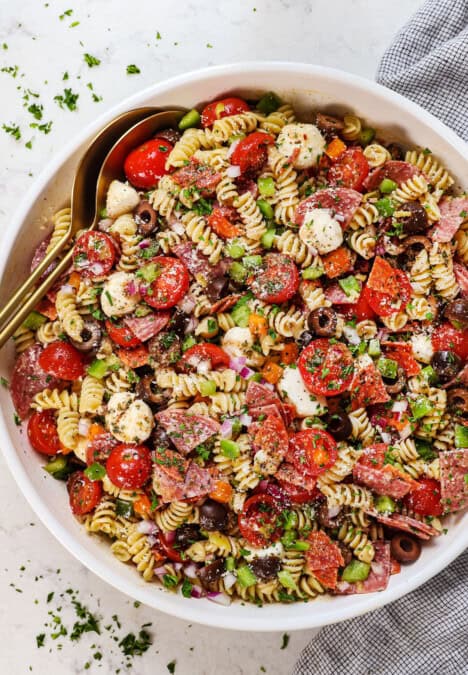
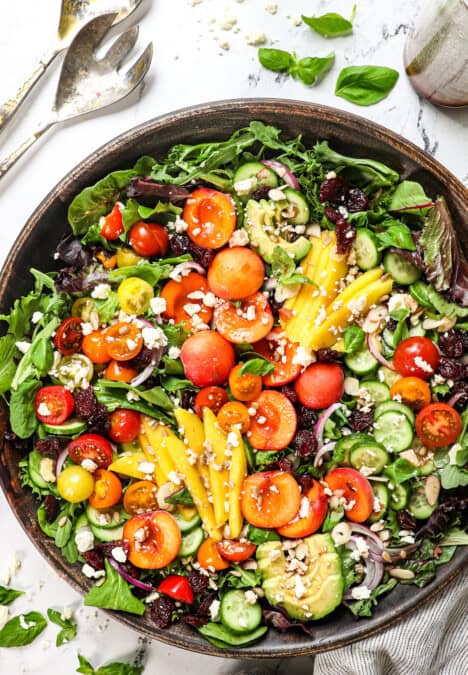
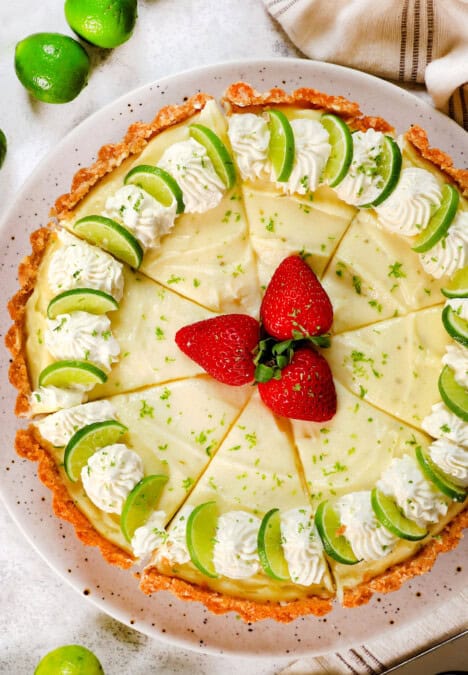























leave a review